PDS: AI and microscopy for worm control
| Project start date: | 02 November 2025 |
| Project end date: | 01 May 2029 |
| Project status: | In progress |
| Livestock species: | Sheep |
| Relevant regions: | Southern Australia |
| Site location: | WA: Great Southern and South Coastal regions |
Summary
The ‘AI and Microscopy for Worm Control’ Producer Demonstration Site (PDS) project, led by Stirlings to Coast Farmers Inc. (SCF), aims to address the growing challenge of drench resistance in sheep gastrointestinal worms across the Great Southern and South Coastal regions of WA. With resistance now affecting all major drench classes, including emerging issues in triple-combination drenches, the project responds to an urgent need for more effective, sustainable worm control strategies. SCF, a farmer-led not-for-profit organisation, will demonstrate the use of digital microscope and AI technology to enable timely, on-farm identification of worm burdens and resistance status, helping producers make more informed drenching decisions and reduce reliance on chemical treatments.
Over the four-year project, SCF will engage ten core producers and at least 70 observers through six demonstration sites, annual field walks, workshops, and extension activities. The project will showcase how the technology can support integrated parasite management, improve drench efficacy, and enhance animal health and productivity. Outcomes include increased adoption of best-practice worm control, improved producer confidence, and long-term preservation of drench effectiveness. The initiative builds on SCF’s strong track record in delivering regionally relevant research and extension, and responds directly to producer interest expressed at recent SCF events.
Objectives
By May 2029, in the Great Southern and South Coastal regions of WA, engaging 10 core producers and a minimum of 70 observer producers, the project will establish six demonstration sites (two per year) to:
- Provide producers with the information, knowledge and confidence to integrate the use of digital microscopes and AI technology to promptly identify sheep gastrointestinal worms and measure resistance to drenches.
- Demonstrate and assess the value of digital microscope and AI technology to:
- Immediately (on-farm) identify worm egg counts (WEC) and locally identify worm species.
- Use this information to either apply drench or (if numbers are low) use other integrated worm control approaches rather than drench application (i.e., pasture spelling).
- Retest worm egg counts/species after drenching to accurately determine resistance status.
- With resistance status data, make more informed on-farm resistance management decisions/plans.
- Revisit best-practice parasite management with industry experts including Dr Brown Besier, local veterinary parasitologist. SCF has spoken with Dr Besier and can confirm his willingness to participate in the project through face-to-face workshops/events (he has collaborated with SCF in the past).
- Conduct an economic analysis that evaluates the effectiveness of the technology in allowing for more informed, appropriate and timely worm management in sheep.
- Implement a series of communication and extension materials extending producer experiences with the use of the technology, including covering best practice resistance management advice from industry experts, that increase the skills and confidence of 75% of the participating core and observer farmers.
- Achieve adoption of the AI & Microscopy technology by 20% of core producers and 10% of observer producers.
- Improve the knowledge, skills and confidence of 80% of the core producers and 60% of the observer producers in foundational best-practice worm management.
- Conduct an annual field walk/trials review presentation to showcase the producer experiences and data driven worm management decisions that encourage attendee adoption of both the digital microscope and AI technology and best-practice worm management practices, attracting at least 30 producers per year.


